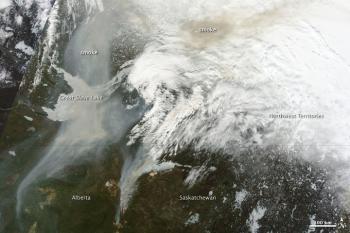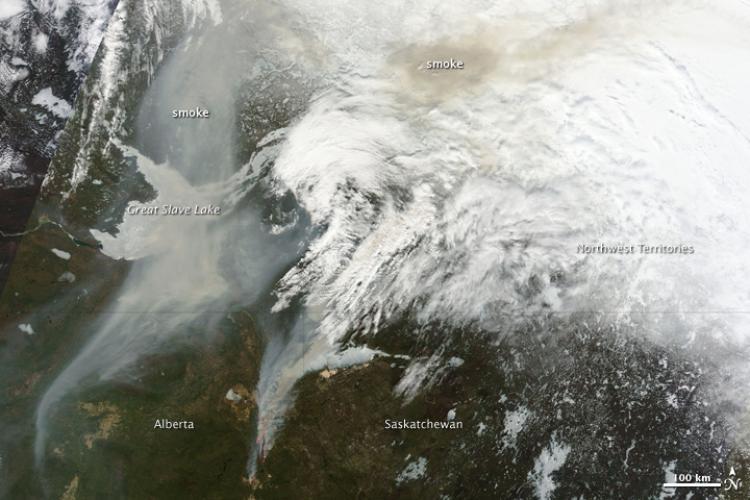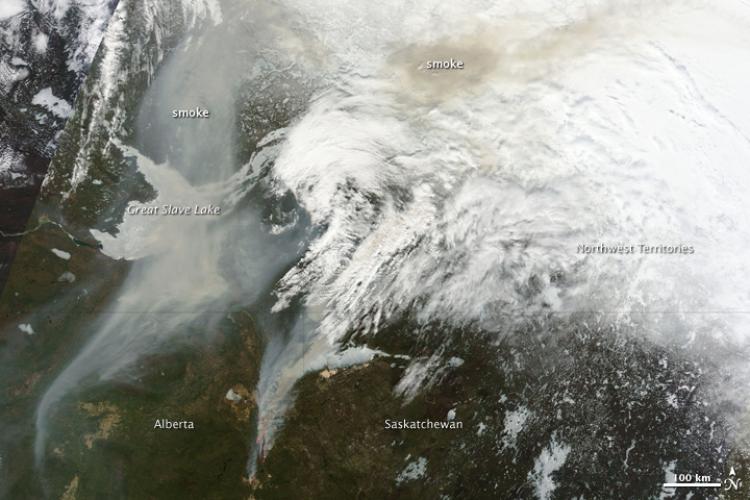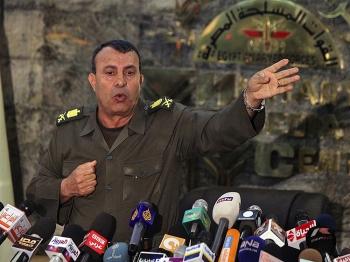Wildfires in Canada have extended across Alberta, Saskatchewan, and the Northwest Territories, according to satellite maps from NASA’s Earth Observatory. On Monday, the Alberta provincial government reported there were 116 fires burning, and 34 of which were out of control. The fires have closed down rail, oil operations, and roads in northern Alberta.
However, while the fires have are wrecking havoc across great swaths of land, hardest hit has been the town Slave Lake, located in northern Alberta, where 40 percent of the town has been destroyed. All 7,000 residents of the town have been evacuated and are currently in evacuation centers or staying with friends or family.
The National Post newspaper conducted a Q&A session with Slave Lake’s mayor Karina Pillay-Kinnee. Pillay-Kinnee sounded hopeful. She said, “We are extremely resilient. We have experienced major disasters in our community, so I know our town has the community spirit to pull together.”
Thankfully, Pillay-Kinnee said, they were able to save much of the greater infrastructure, such as the Northern Lakes college, school institutions, the hospital and member of Parliament office. “Those critical infrastructures, those are all standing. Our government center, obviously, has perished so we’ll have to rebuild.”
To the many residents who have lost their homes or are concerned about what is left, she commented, “We’re working on implementing the basic services before we can have residents return—things like ensuring there’s potable water, electricity, natural gas, getting our hospital intact with critical services that we need before residents can come back … likely a couple of weeks,” she said.
Wildfires Devastate Parts of Canada
Wildfires in Canada have extended across Alberta, Saskatchewan, and the Northwest Territories, according to satellite maps.

By Carlen Zhang
5/17/2011
Updated: 10/1/2015





Friends Read Free